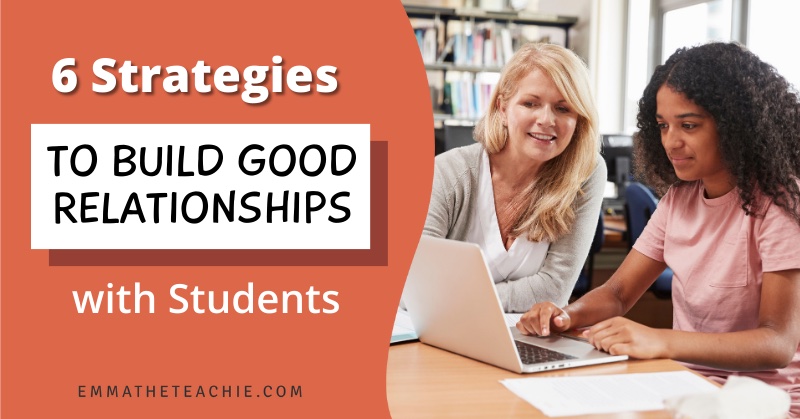
6 Strategies to Build Good Relationships with Your Students
Why did you become a teacher?
I bet there is one teacher, or even multiple teachers, that pop into your head.
Now… think about what all of those teachers had in common…
I would bet that those teachers took the time to build positive relationships with students. I would also bet that you became a teacher to create strong relationships with students.
Building positive relationships with students is an essential part of our everyday classroom routine. Good relationships with students can lead to better communication, improved behavior, and higher academic achievement. In this blog post, I want to discuss some strategies that teachers can use to build good relationships with students.
Let’s dive in!
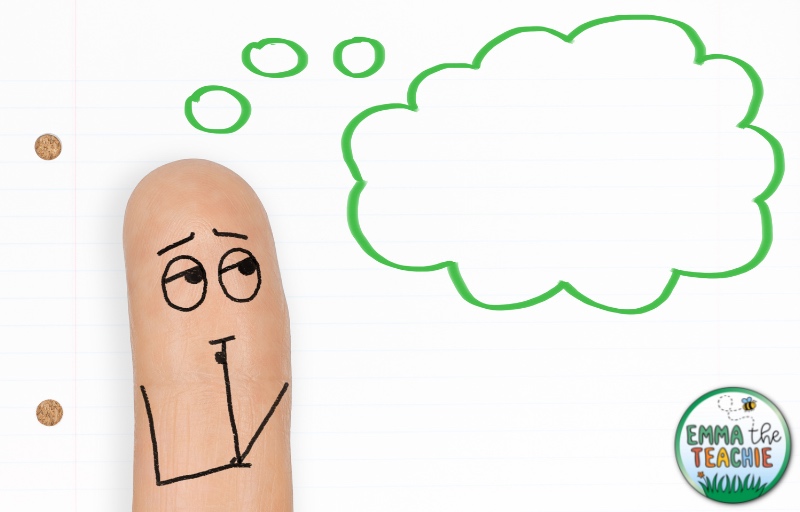
1 – Show interest in your students
One of the best ways to build positive relationships with students is to show a genuine interest in their lives. You can do this by asking them questions about their hobbies, interests, and families.
I like to ask these questions at the beginning of the year. On the first day of school, I will have students fill out an interest inventory. This inventory will ask students about their family, previous educational experience, their likes, their dislikes, etc…
As the year goes on, I will use this information to help connect with students. Connecting with students may include initiating conversation and/or incorporating some of their interests into my lessons and practice problems.
Showing that you care about them as individuals will make them more likely to trust and open up to you.

2 – Be approachable
In order to build relationships, students need to feel comfortable when talking with their teacher. Being approachable can have multiple meanings. Teachers should be approachable in regards to students having questions about content and if students have other topics they want to talk about as well.
There are so many ways to make sure you appear approachable to students. Here are some of the ways I make myself approachable.
First, I make sure students know when and how they can reach me. I make this clear on the very first day. They know what days and times I have office hours, and emailing me is the easiest way to get a hold of me.
Next, it is important to show empathy to students. You need to remember that everyone has a different path in life and that their feelings are valid. Empathy also means that you are not criticizing or judging students. If students feel you are criticizing or judging them, there will be a wall built, and the effort to tear down that wall will be too great.
Lastly, you need to set an example in your classroom. If you approach students with respect and poise, they will be more likely to approach you in that manner, as well.
This mutual respect will let students know that you are approachable inside and outside the classroom.
And lastly, don’t forget to smile and laugh!
When you are enjoying chatting with students, they will enjoy it too.
Being approachable is something that comes with experience, and it is so important. When students feel comfortable coming to you, you can build better relationships and create a more positive learning environment for everyone.
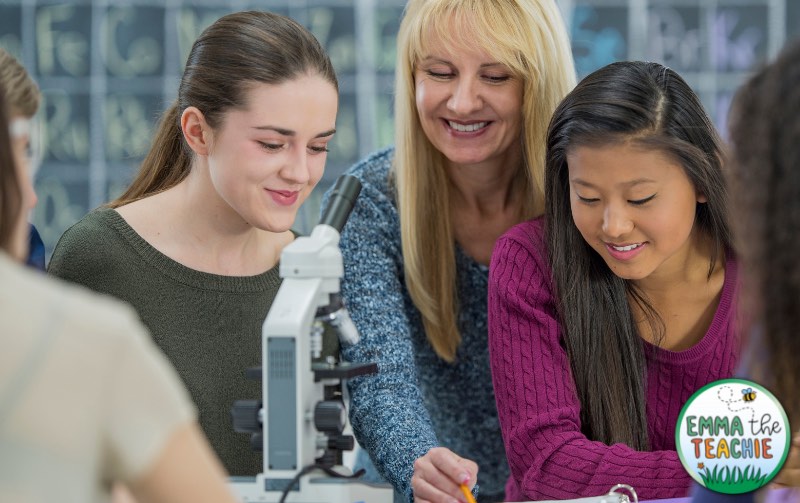
3 – Use positive reinforcement
Positive reinforcement can be a powerful tool for building good relationships with students. When students do something well, let them know that you noticed and appreciate their efforts.
It is important to note that positive reinforcement does not need to be a physical item, such as candy or stickers. A simple compliment can go a long way in building a positive relationship with students.
In order for positive reinforcement to be effective in building relationships, it should be timely and specific to the situation. For instance, let students know what they did well and how it helped the class or the group.
In addition, positive reinforcement should not be used only for students who are high achievers or receive high scores on exams. The emphasis should be on praising students for the progress they make, not just for the end result.
Positive reinforcement should be used with other methods to help students get along well with each other. This will help make the classroom a happy, supportive place where students feel motivated and interested.
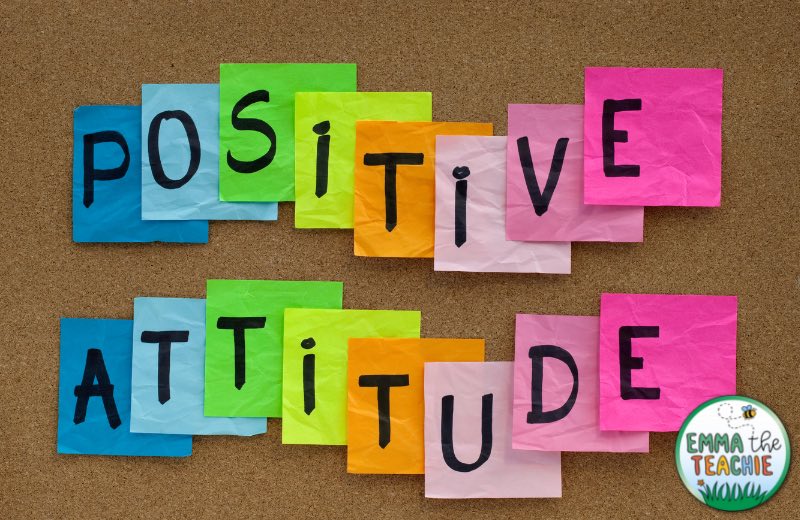
4 – Be fair and impartial with your students
Something I heard very early on in my teaching degree was to communicate my expectations clearly, and then apply them consistently.
Students are very quick to spot if you are playing favorites. And it is easy for them to feel like you are picking on them if they feel you haven’t been fair.
It’s imperative that we treat students fairly, applying our behavior policies consistently. This is especially important for our more vulnerable students – they crave routine and boundaries. Having clear expectations and following through on these lets them know you care about them.
If your school doesn’t have behavior policies, late work policies, etc. then set your own. Do this at the start of the year and then discuss them in your very first class.
By telling students what the rules are, you are showing you care about them and their education. They will respect and secretly love you for it, even if they complain at the time!

5 – Encourage student participation
Encouraging student participation is an effective way to build strong relationships with students.
When students feel that their opinions and ideas are valued, they are more likely to trust and respect their teacher.
By creating opportunities for students to engage with the material, share their ideas and perspectives, and learn from one another, you are allowing students to feel comfortable and understand that your classroom is a safe space. It can also provide opportunities for students to develop communication and collaboration skills and foster a sense of community and belonging within the class.
Also, if you give students a voice and value what they have to say, they are more likely to feel like their teacher and classmates respect and value them. This can lead to increased motivation, engagement, and investment in their learning.

6 – Deliver engaging lessons
I’m guessing your own favorite teachers have two things in common.
- They were lovely people, and
- You enjoyed their lessons
Now, I am SURE that everyone reading this blog is a lovely person who wants the best for their students!
But delivering lessons that your students will enjoy is a little harder. Maybe your school didn’t provide a curriculum. Maybe you have a million things on your to-do list (like every teacher), and lesson planning gets bumped to the bottom. Or, maybe you are new to teaching and are still figuring out what makes a good lesson.
The thing is, delivering lessons that are interesting and relevant to students can actually help you build stronger relationships with your students.
Students respect teachers who are clearly trying to help their students achieve their best. By planning engaging and rigorous lessons, you help students realize you care about them and their education.
If you need support in delivering great lessons, be sure to check out my resources in my store – these are designed for student engagement and progress.
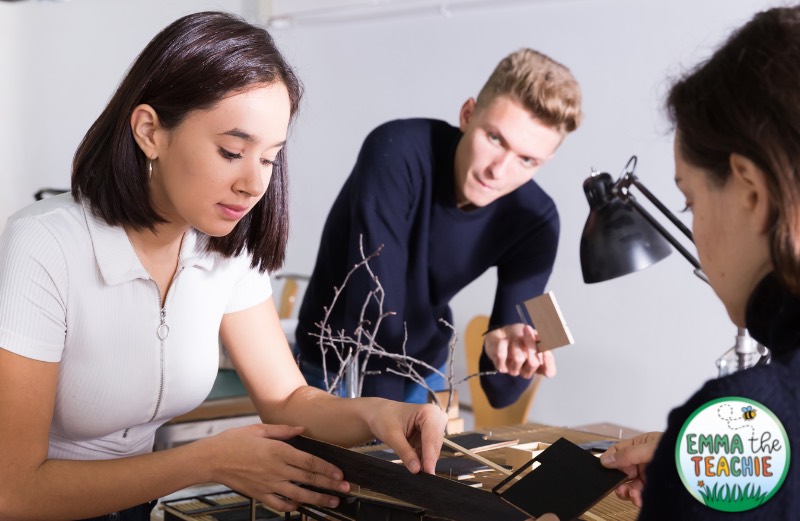
We want the best for our students
You are probably already doing many of these strategies, without even realizing it!
Why not pick one strategy from the list and focus on it this week:
- Show interest in your students
- Be approachable
- Use positive reinforcement
- Be fair and impartial with your students
- Encourage student participation
- Deliver engaging lessons
And if you do need some ready-to-go lessons, you can check these out in my store.
I hope you have a wonderful day,
